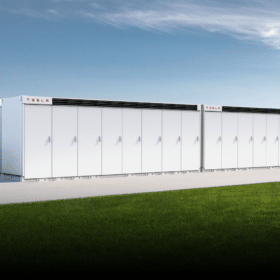Solar trade headwinds
Prices across the solar supply chain remained in bearish territory into the fourth quarter of 2024. Trade and regulatory developments have continued to preoccupy the industry and dampen trading activity.
Solar wafer prices stabilize as supply rationalizes, regional policies shape production and trade
In a new weekly update for pv magazine, OPIS, a Dow Jones company, provides a quick look at the main price trends in the global PV industry.
Solar manufacturing slows in bid to balance supply and demand
Smaller solar manufacturers have been shuttering production lines, but not at a pace fast enough to return profit margins to healthy territory. InfoLink’s Amy Fang considers what lies ahead for PV companies in the near term.
BLUETTI targets consumer market with home energy storage systems
The manufacturer’s EP900 solution is designed to integrate into a home energy system to provide backup power, while the scalable AC500 unit is geared toward campers and RV travelers.
BNEF: Lithium-ion battery pack prices drop to record low of $115/kWh
Battery prices continue to tumble on the back of lower metal costs and increased scale, squeezing margins for manufacturers. Further price declines are expected over the next decade.
Sinovoltaics updates battery energy storage system financial stability ranking
The latest financial stability ranking keeps Tesla, Mustang Battery, Kung Long Batteries, Hyundai Electric and Eaton, in the top five spots in a report that includes 55 manufacturers.
Nature Infrastructure, Davidson Kempner buy PV, storage platform from Greencells
Investment firms Davidson Kempner and Nature Infrastructure Capital have jointly acquired a renewables project development platform from Germany’s Greencells Group. They will run the platform as a standalone venture and plan to expand its nearly 4 GW portfolio of utility-scale solar and battery projects.
Longi debuts HPBC 2.0 modules in China’s first distributed solar project
Longi says its hybrid passivated back contact (HPBC) 2.0 dual-glass modules have been installed for the first time in a distributed generation project. The 2.2 MW solar plant in northeastern China is now in commercial operation.
Linking safety and yield for C&I
Huawei’s new SUN5000 Series integrates its smart string inverter with power optimizers to meet the complex needs of a growing commercial and industrial (C&I) market segment.
Exploring the role of hybrid energy hubs: introducing IEA PVPS Task 20
The International Energy Agency Photovoltaic Power Systems Programme (IEA PVPS) is starting a new Task 20: Energy Hubs for Green Hydrogen. This joint effort with the IEA Wind and Hydrogen Technology Collaboration Programmes (TCPs) seeks to advance the integration of wind, solar, and hydrogen technologies into hybrid energy systems that produce green hydrogen efficiently and sustainably. Running from 2025 to 2028, Task 20 will address the practical, technical, environmental, and societal challenges associated with hybrid energy hubs, providing actionable insights for their implementation on a global scale.










